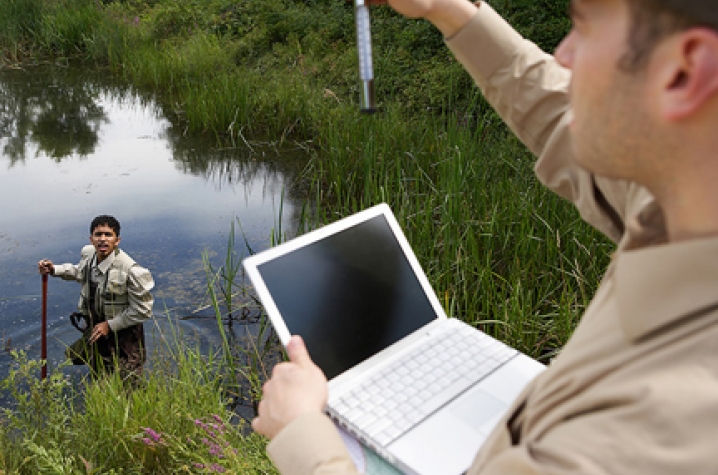Kentucky, Montana Share $6M Water-Quality Grant

LEXINGTON, Ky. (Aug. 31, 2009) − The National Science Foundation has awarded a $6 million grant to Kentucky and Montana to support an advanced “cyberinfrastructure” project that includes a combination of hardware, software, networking, data storage, computational modeling and human resources.
The project will provide an end-to-end process from an integrated workflow of water-quality sensors in lakes and streams, through data management and models, to end points of three-dimensional visualizations. The information system, developed through this project and funded by NSF's EPSCoR program, will manage historical data, as well as vast amounts of new data generated by lake and stream sensor networks.
This award is funded under the American Recovery and Reinvestment Act of 2009 (ARRA).
The collaborative project, led by Barbara Kucera, deputy director of the Center for Computational Sciences at the University of Kentucky, and Richard Hauer, professor of limnology at the University of Montana, is composed of faculty, researchers and students at the University of Kentucky, University of Louisville, Murray State University, Eastern Kentucky University, University of Montana, and Montana State University. The consortium, named the Virtual Observatory Ecological Information System (VOEIS), will serve as a test-bed for similar ecological information systems around the nation.
Included as part of the consortium are two of the most successful biological field stations in the country -- Hancock Biological Station on Kentucky Lake, directed by Biological Sciences Professor David White, and Flathead Lake Biological Station in northwest Montana, headed by Ecology Professor Jack Stanford. Both biological stations have long-established and highly active freshwater and ecological research and monitoring programs. Sensors at both Kentucky Lake and Flathead Lake will gather a broad suite of data, such as temperature, dissolved oxygen concentration, light penetration and nutrients, and route those data via wireless connections back to the laboratories for instantaneous monitoring and analysis.
Civil Engineering Professor James Fox at UK and Electrical and Computer Engineering Professor Cindy Harnett at UofL will develop new types of sensors to be deployed throughout the two-state collaborative. Eastern Kentucky University Geography Associate Professor Alice Jones will lead undergraduate students in sensor deployment in eastern Kentucky. VOEIS software development and modeling research on the project will be headed by Ecology Professor Andrew Hansen at Montana State University.
The project also includes partners from industry and the public sector. The visualization analyses will be performed by the UK Center for Visualization and Virtual Environments in collaboration with software experts at the National Center for Supercomputing Applications (NCSA) at the University of Illinois at Urbana-Champaign, one of the nation's most powerful supercomputing resources. The project will also work with Cisco Systems Inc. who will be using the collaboration in their development of new environmental data routers.
The data gathered at Kentucky Lake and Flathead Lake will offer guidance on trends in key climate factors such as temperature, precipitation and snow dynamics; the impact of human demography and land use; and the resilience of Kentucky and Montana lakes and streams to environmental change, among other questions.
The computer network system will help ecological researchers in both states enhance graduate and undergraduate education curricula and research experiences. In addition, the system will contribute to developing ecological education courses and offer condensed versions of the data to public interest groups via the Web. A special effort will be made to enhance historically underserved and underrepresented students in science and engineering, such as economically disadvantaged students from eastern Kentucky and students from Montana’s seven Native American tribal colleges.
Outreach programs at the Kentucky Water Resources Research Institute and the Montana Water Center will channel information to the public and to K-12 students.
More information about the project is available online at http://www.murraystate.edu/qacd/cos/hbs/VOEIS and http://www.mtnsfepscor.org/mtnsfepscor.html.




